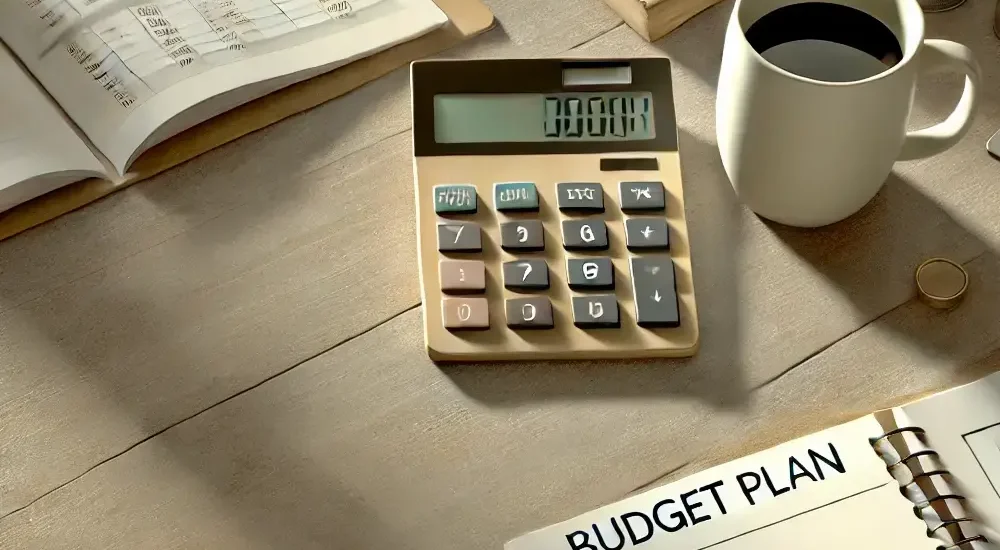How to Create an Effective Budget: 7 Step Guide to Financial Success
- November 10, 2024
- Posted by: Financeguidehub.com
- Category: Budgeting Tips

Create an effective budget is one of the most powerful steps toward financial success. Budgeting helps you track your income and expenses, allowing you to manage your money wisely and achieve your financial goals. Whether you’re new to budgeting or need a refresher, this guide offers practical steps and strategies for building a budget that works for you. By the end of this article, you’ll have the tools to start creating a realistic budget and make the most of your hard-earned money.
Why is Budgeting Important?
An effective budget serves as the foundation of any solid financial plan. It helps you:
- Track Spending: Understand where your money is going.
- Avoid Debt: Prevent overspending and reduce reliance on credit.
- Achieve Financial Goals: Save for future goals, whether they’re short-term or long-term.
Creating and following a budget empowers you to take control of your financial health, helping you avoid debt and build a better future.
Step 1: Determine Your Financial Goals
Before creating a budget, identify your financial goals. Are you saving for retirement, a vacation, or an emergency fund? Clear goals give purpose to your budget and motivate you to stick to it.
- Short-Term Goals: These might include building an emergency fund, paying off credit card debt, or saving for a trip.
- Long-Term Goals: Common long-term goals include saving for retirement, a down payment on a house, or college tuition.
Pro Tip: Break down larger goals into smaller, manageable milestones to make them more achievable.
Step 2: Calculate Your Income
Knowing your total monthly income is essential for building an accurate budget. Include all sources of income, such as:
- Salary or Wages: Include after-tax earnings.
- Freelance Work or Side Gigs: Consider any additional income from part-time jobs.
- Passive Income: Include earnings from investments, dividends, or rental properties.
For freelancers or individuals with variable incomes, Bankrate suggests using an average of the last 3-6 months to get a realistic estimate.
Step 3: Track Your Expenses
Tracking your expenses allows you to see where your money is going and identify areas for potential savings. Divide your expenses into two main categories:
- Fixed Expenses: These are consistent monthly costs like rent, mortgage payments, car payments, insurance premiums, and loan payments.
- Variable Expenses: These fluctuate monthly and include groceries, dining out, entertainment, and utilities.
Using a budgeting tool, such as Mint or YNAB (You Need a Budget), can simplify the process of tracking expenses. Kiplinger recommends reviewing your expenses over the past few months to spot any trends or irregular expenses that may come up periodically.
Step 4: Set Spending Limits and Prioritize Needs Over Wants
An effective budget ensures that your essential needs are covered while allowing flexibility for discretionary spending. Use the 50/30/20 rule as a guideline:
- 50% for Needs: Allocate half of your income for essential expenses like housing, food, utilities, and transportation.
- 30% for Wants: Use this portion for discretionary spending, like dining out, entertainment, or hobbies.
- 20% for Savings and Debt Repayment: Allocate 20% to build your emergency fund, save for the future, or pay down debt.
This rule, endorsed by The Motley Fool, provides a balanced approach to budgeting that’s easy to follow.
Step 5: Create a Plan for Debt Repayment
High-interest debt, like credit card debt, can prevent you from reaching your financial goals. If you have debt, prioritize repayment within your budget. Here’s how:
- Focus on High-Interest Debt First: Paying off high-interest debt first reduces overall interest payments.
- Consider Debt Consolidation: Combining multiple debts into a single loan can simplify repayment and may reduce interest.
Using the debt snowball or debt avalanche methods, as recommended by Forbes Personal Finance, can help you manage and eliminate debt effectively.
Step 6: Automate Savings
Automating savings helps you stay consistent without the temptation to spend. Many experts, including those at CNBC Personal Finance, suggest setting up automatic transfers to a savings or retirement account.
- Direct Deposit: Set up an automatic transfer to save a portion of your income each month.
- Savings Apps: Consider apps like Acorns or Digit to automate small, frequent savings that add up over time.
Step 7: Monitor and Adjust Your Budget Regularly
A budget is not a one-time activity. Life changes, and so should your budget. Regularly reviewing and adjusting your budget keeps it relevant to your current financial situation.
- Monthly Review: Set aside time each month to compare your spending with your budget.
- Adjust for Life Events: Major life changes, such as a new job, a move, or a family addition, may require a budget update.
Use your monthly review as an opportunity to celebrate financial wins and identify any areas for improvement.
Tools and Resources for Effective Budgeting
There are various budgeting tools and resources that can simplify the process:
- Budgeting Apps: Tools like YNAB, Mint, and PocketGuard can streamline expense tracking and offer insights into your spending patterns.
- Financial Calculators: Sites like Investopedia and Bankrate provide calculators for retirement planning, debt repayment, and more.
These tools can help you stay organized and make data-driven decisions about your finances.
Creating an effective budget is essential for achieving financial freedom and security. By setting clear goals, tracking income and expenses, and sticking to a structured plan, you can build a budget that supports your lifestyle and financial aspirations. Start by taking small steps today—evaluate your spending, set realistic limits, and automate your savings. Interested in learning more? Check out our guide to building an emergency fund to start preparing for unexpected expenses.

